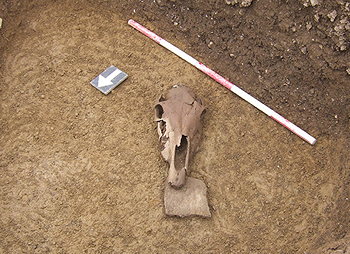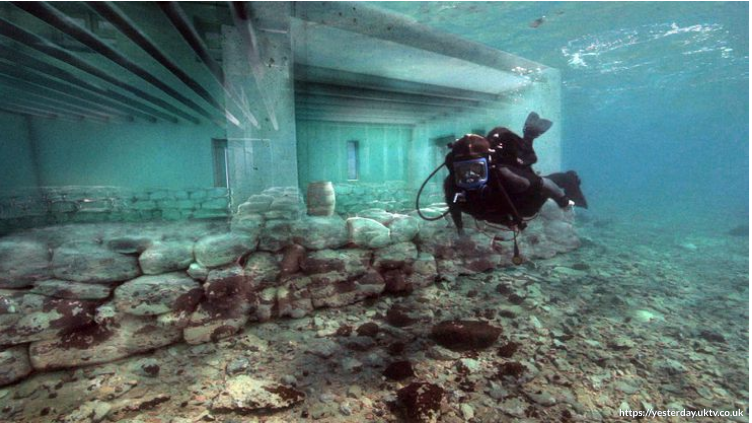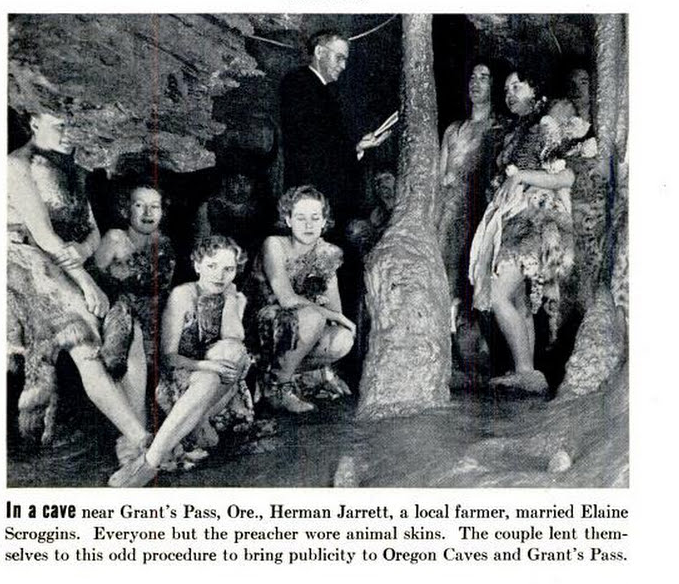Archaeology
Acoustic Skulls
When excavating medieval and early-modern buildings in northern Europe, archaeologists sometimes find horse skulls buried beneath them. One theory is that the skulls were placed there for magical, ritualistic reasons. Another possibility is that they served an acoustic purpose.Sonja Hukantaival discusses this in her 2009 article "Horse Skulls and 'Alder-Horse': The Horse as a Building Deposit".
In churches the acoustics were very important, of course. And in houses were people danced and music was played, but why in threshing barns? It was considered important that the sound of threshing carried far. Could this have some magic purpose? It is well known that in many cultures loud noises are considered to expel evil forces. So this "practical" custom of acoustic skulls may not be contradictory to magical and symbolic acts at all. One question to consider is also why horses' skulls were preferred. One would presume that the skulls of cattle would be available more often than those of horses, and possibly just as suitable for acoustics.
More info: IAC Archaeology

Posted By: Alex - Mon Jan 10, 2022 -
Comments (0)
Category: Death, Medieval Era, Archaeology
The Sunken City of Shicheng

What many believe to be a mystery isn't actually so mysterious. Lion City, famed for sitting at the bottom of the Qiandao Lake, has a surprising history. The once thriving city, known for its powerful statue throughout all of China, now resides over 100 feet below the lake's surface. This was not due to a natural disaster or any type of destructive force unless you consider human nature to be one. The ancient city met its watery fate due to the hands of humans, specifically those who gave up the land the city once sat on to make way for modern machinery.
While there are many details surrounding the reasoning for this -- much of which we'll get into later on -- there's no denying that the fact that this city is fully preserved is a modern miracle. Although it sits deep under the water, all of its structures, statues, memorials, and archways all sit in perfect stature. Its rediscovery happened almost two decades ago and since then, divers have been repeatedly making trips below the surface to see what new aspects of the city they can explore. Inside these preserved walls lie the tale of several powerful dynasties, an ancient way of life, and some of the most stunning architectural features that are so indicative of China's history.
Full story with more pictures.
Daily Mail coverage.
Posted By: Paul - Thu Jan 28, 2021 -
Comments (3)
Category: Architecture, History, Archaeology, Oceans and Maritime Pursuits, 1950s, Asia
Caveman Wedding

Original photo here.
Also, more weird weddings at the link.
Posted By: Paul - Thu Oct 27, 2016 -
Comments (0)
Category: Archaeology, 1930s, Weddings
Save The History

Built in 447 BC, the Parthenon sits on the Acropolis in the center of Athens Greece. Unfortunately it is in danger due to decay of the Acropolis. Repairs are being attempted, all the best of luck in that endeavor. It would be a tragedy to lose such a great piece of history.
Posted By: Alex - Sat Oct 04, 2014 -
Comments (5)
Category: History, Archaeology
Mystery Artifact
Maybe the combined brainpower of WU can solve this mystery.
Posted By: Paul - Fri Apr 19, 2013 -
Comments (12)
Category: Ambiguity, Uncertainty and Deliberate Obscurity, Regionalism, Technology, Archaeology
Weird Science – Watch and Learn

Outside it is not much to look at, little more than a discoloured rock dredged up from the sea floor. But an x-ray scan of the object, actually a pocket watch recovered from a 17th century shipwreck, has revealed that the internal mechanism has been perfectly preserved. The computer aided tomography system used was sensitive enough to pick out the tiniest details, included the engraved name of the master watchmaker, one Niccholas Higginson of Westminster, London (Gizmodo).
As if more proof were needed that they don’t build them like they used to, a UK group has started collecting donations to build the first fully working version of Babbage’s “Analytical Engine”. The original design, dating from 1837, was never completed, possibly due to a combination of the strict engineering tolerances needed and Babbage’s notoriously prickly temperament. If the final machine works as advertised, it will be very strong confirmation of the claim that Babbage designed the first general purpose, programmable computer (BBC News).
Meanwhile, in Slovenia, Borut Povse and his team are busy teaching a modern descendant of Babbage’s design to hit people. Somehow Povse has convinced six volunteers to let an industrial robot hit them on the arm with various sharp or blunt implements in an effort to determine how much pain each blow causes. Obviously this has a beneficial use in that robots can be programmed not to exceed certain levels of force near a human obstacle, but will also be of immense interest to the machines during any future robot uprising (New Scientist).
Another robot out to supplant humans is HRP-4, a gynoid (female android), that has learnt to sing by copying the inflection and expressions of a human performer, right down to the breathing. The hope is to make robots behave in a more convincingly natural way, and so overcome the so called ‘uncanny valley’. From the video, it looks like they’ve still got a way to go (Daily Mail).
More in extended >>
Posted By: Dumbfounded - Fri Oct 22, 2010 -
Comments (5)
Category: Anthropomorphism, Beauty, Ugliness and Other Aesthetic Issues, Charities and Philanthropy, Futurism, History, Archaeology, Injuries, NGOs, Robots, Science, Technology
Follies of the Mad Men #76
[From The Saturday Evening Post for October 10 1953. Two scans, top and bottom.]
Nothing like aligning your product with a civilization that practiced human sacrifice. The Incas weren't the Aztecs, but as Wikipedia reminds us: "There is [sic] archaeological discoveries supporting the presence of sacrifice within Inca society according to Reinhard and Ceruti: 'Archaeological evidence found on distant mountain summits has established that the burial of offerings was a common practice among the Incas and that human sacrifice took place at several of the sites.The excellent preservation of the bodies and other material in the cold and dry environment of the high Andes provides revealing details about the rituals that were performed at these ceremonial complexes.'"
And did they actually make the best ink ever? I can't find any reference to such an accomplishment.
Posted By: Paul - Tue Nov 10, 2009 -
Comments (3)
Category: Business, Advertising, Products, History, Archaeology, 1950s, South America
Chocolate Just Got Better!

FYI: Chocolate was, as everyone knows, invented/discovered by the Aztecs. But what is less well known is that they did so at least 3000 years ago, and were probably trying to make beer. Anthropologists John Henderson, of Cornell University, and Rosemary Joyce, of University of California, discovered cacao residues on pottery vessels dating back to 1000 BCE that are believed to be from a drink formed by fermenting the pulp and seeds (PNAS).
(Image by Wikipedia.)
Posted By: Dumbfounded - Fri Jul 17, 2009 -
Comments (20)
Category: Food, Candy, Nutrition, History, Archaeology, Products
It Just Ain’t Unnatural!

But if we learnt war early on the path to humanity, we may have learnt laughter even earlier. Researchers from the University of Portsmouth analysed the sounds 22 young apes made when being tickled, and concluded that it is laughter. Dr Davila-Ross and her team looked for similar acoustic characteristics to human laughter in the young of several ape species, and found greater similarity in the sounds made by chimpanzees and bonobos (the species closest to humans genetically) than in that of more distantly related apes such as orangutans. The team concluded that laughter must have evolved some time before the major ape groups split apart, 18 million years ago (BBC News).
Finally, this last piece was going to be about gay penguin adoption, but that's already up, so instead I'd like to draw your attention to a
(Image from SPEC Productions, who collect and reprint some damn fine comics!)
Posted By: Dumbfounded - Mon Jun 08, 2009 -
Comments (2)
Category: Animals, Ethnic Groupings, Sexuality, War, Anthropology, Archaeology
World’s Oldest Joke Discovered!
Archaeologists have just discovered the world's oldest joke, as ably pointed out in today's Weird News picks by Minister Chuck.But I can't resist adding that I hope they never dig up this one.
Posted By: Paul - Sat Aug 02, 2008 -
Comments (4)
Category: Death, History, Archaeology, Humor, Comedians, Jokes, Television

| Who We Are |
|---|
| Alex Boese Alex is the creator and curator of the Museum of Hoaxes. He's also the author of various weird, non-fiction, science-themed books such as Elephants on Acid and Psychedelic Apes. Paul Di Filippo Paul has been paid to put weird ideas into fictional form for over thirty years, in his career as a noted science fiction writer. He has recently begun blogging on many curious topics with three fellow writers at The Inferior 4+1. Contact Us |






